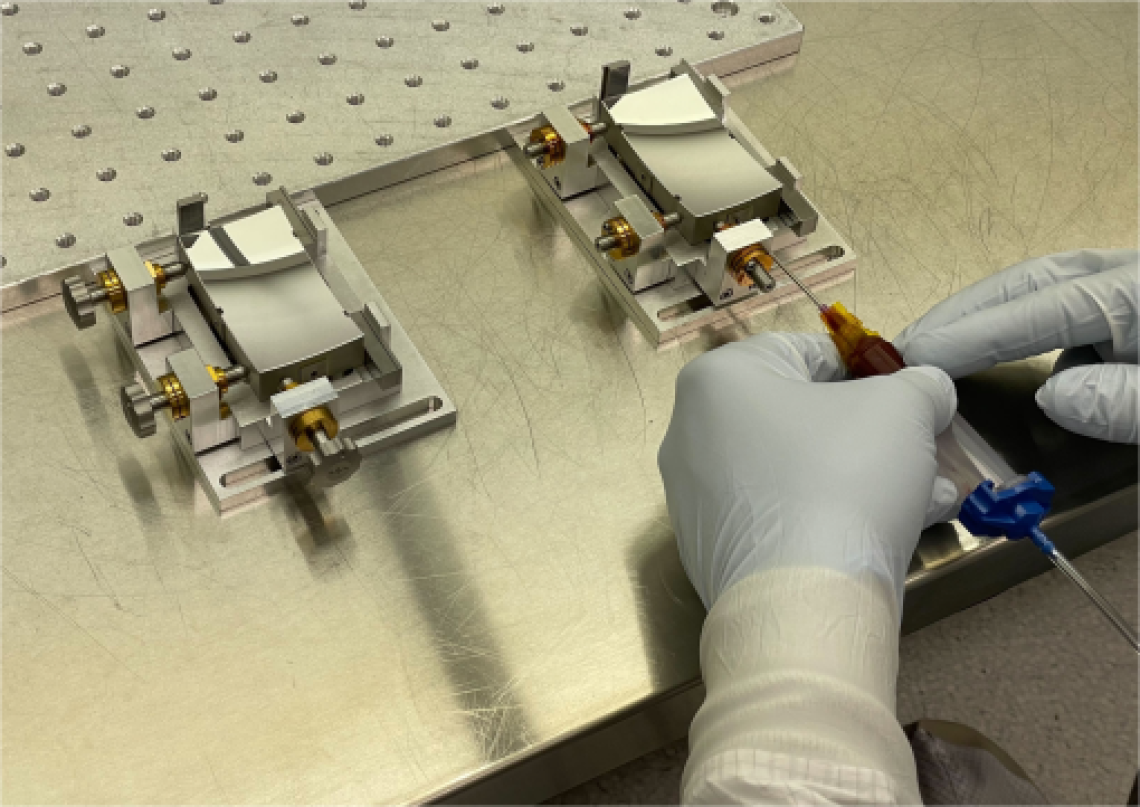Aspera team maps their progress on mission to study galaxy evolution

In a new paper this month from Carlos Vargas and the Aspera team, readers get updates and context for the Steward Observatory-based mission. (Pictured: OAPs being bonded to their flight holders.)
Far beyond the visible edges of a galaxy lies something scientists have never seen directly: a vast, faint halo of gas called the circumgalactic medium, or CGM. Astronomers believe this glowing cloud acts as both lungs and bloodstream for a galaxy—bringing in fresh material to fuel new stars, and carrying out the byproducts of stellar explosions. Now, for the first time, a NASA-funded mission called Aspera is preparing to capture this ghostly structure in ultraviolet light.
The CGM is huge—sometimes stretching hundreds of thousands of light-years from a galaxy’s center—but it’s so diffuse that traditional telescopes can’t image it directly. Until now, astronomers have relied on indirect measurements, using bright background objects like quasars to detect the halo’s presence. But Aspera is designed to do something no other mission has accomplished: take direct images of this elusive glow, capturing its ultraviolet wavelengths.
Leading this pioneering project is a team of scientists and engineers who have already made major progress in preparing for launch. Over the last few years, the Aspera team has developed and tested the specialized camera system that will make this breakthrough possible. The heart of the system is a wide-field telescope built to detect two very specific kinds of light: one from hydrogen atoms (called Lyman-alpha) and another from highly energized oxygen atoms (called O VI).
The team has released their latest update on the mission, here.
These ultraviolet wavelengths can’t be seen from Earth’s surface, so the Aspera telescope must fly above the atmosphere. To do this affordably, the team has designed it as a small satellite—no bigger than a dishwasher—that will operate in low-Earth orbit.
One of the most innovative elements of Aspera is its ability to focus on the big picture. Rather than zooming in on a single bright object, its camera is built to capture wide regions of sky at once, revealing large-scale structures that stretch across the CGM. To ensure the telescope can detect the incredibly faint ultraviolet light, the team has worked carefully to design optics and detectors that maximize sensitivity while minimizing noise from unwanted light sources, like sunlight reflecting off Earth's atmosphere.
Much of this work builds on earlier technology developed for balloon-borne telescopes like FIREBall-2, which successfully demonstrated that ultraviolet emission from the CGM could be detected from high altitudes. Aspera takes the next step—bringing that technology into space for sustained, large-scale observations.
If all goes according to plan, Aspera will be able to map the CGM around nearby galaxies in stunning detail, for the first time showing where gas is falling into galaxies and where it’s being pushed out. That, in turn, will help answer some of astronomy’s biggest questions: How do galaxies grow? What regulates star formation? And how are galaxies connected to the vast web of gas that fills the universe?
As one team member put it, Aspera is “a benchmark for emission-line imaging,” pointing to its role as a foundation for future ultraviolet missions targeting the CGM and cosmic ecosystems beyond. With launch preparations underway and hardware testing progressing, the Aspera team is closing in on a historic first: revealing the outlines of mysterious structures that have, until now, been hiding in plain sight.
More stories about Aspera:
NASA selects rocket for U of A-led Aspera Mission
U of A-led Aspera mission hits spacecraft milestone

